Stylistic theories and classifications By G. Leech, I.


Stylistic theories and classifications By G.Leech, I.R. Galperin, Y.M. Skrebnev

Modern classifications of expressive means in the English language G.Leech I.R. Galperin Y.M. Skrebnev

G.Leech “Essays on Style and Language”, 1967, London the language of literature normal deviant Paradigmatic deviation (парадигматическое нарушение) Syntagmatic deviation (синтагматическое нарушение)

Paradigmatic deviation (парадигматическое нарушение) The writer chooses between equivalent items, which are contrasted to the normal range of choice away away He was standing a few feet away (poetic: farmyards away).

Paradigmatic deviation (парадигматическое нарушение) personification In this case we deal with purely grammatical oppositions: Personal / impersonal; animated / unanimated; concrete / abstract. As Connie had said, she handled just like any other aeroplane, except that she had better manners than most. aeroplane Personified on the grammatical level Deviant use Can only be associated with human beings


Syntagmatic deviation (синтагматическое нарушение) The writer repeatedly makes the same selection in a syntagmatic chain of language units. Instead of “Robert turned over a hoop in a circle” We have “Robert Rowley rolled a round roll round”

Denoting (выражающий) the relationship between a word and other members of a syntactic unit containing it Syntagmatic means

I.R. Galperin “Stylistic”, 1971 Level-oriented approach Phonetic expressive means and stylistics devices Lexical expressive means and stylistics devices Syntactical expressive means and stylistics devices

Phonetic expressive means and stylistics devices onomatopoeia alliteration Rhyme (full, incomplete, compound or broken, eye rhyme, internal rhyme. Stanzas: couplets, cross, triple, framing) rhythm

Lexical expressive means and stylistics devices I. Interaction of different types of a word’s meanings: dictionary, contextual, derivative (производный), nominal, and emotive III. Stable word combinations in their interaction with the context II. Interaction between two lexical meanings simultaneously (одновременно) materialized in the context

Interaction of different types of a word’s meanings: dictionary, contextual, derivative (производный), nominal, and emotive Means based on interplay of dictionary and contextual meanings Interaction of primary and derivative meanings Interaction of logical and nominal meanings A B C D Metaphor Metonymy Irony Polysemy Zeugma and pun Interjection (Междометия) and exclamatory words Epithet Oxymoron Opposition of logical and emotive meanings antonomasia

practice All present life is but an interjection An ‘Oh’ or ‘Ah’ of joy or misery, Or a ‘Ha! Ha!’ or ‘Bah!’ – a yawn or ‘Pooh!’ Of which perhaps the latter is most true. (Byron) Interjection and exclamatory words Mr. Facing–Both–Ways does not get very far in this world. antonomasia Dear Nature is the kindest Mother still. (Byron) metaphor May’s mother always stood on her gentility; and Dot’s mother never stood on anything but her active little feet. (Dickens) Zeugma and pun

II. Interaction between two lexical meanings simultaneously (одновременно) materialized in the context Simile Periphrasis Euphemism Hyperbole

practice The earth was made for Dombey and Son to trade in and the sun and the moon were made to give them light. (Dickens) Hyperbole Treacherous as a snake simile In private I should call him a liar. In the Press you should use the words: ‘Reckless (опрометчивый) disregard (пренебрежение) for truth’. euphemism The fair sex Periphrasis (=women)

III. Stable word combinations in their interaction with the context Clichés Proverbs and sayings Epigrams Quotations Allusion Decomposition of set phrases

practice You know which side the law’s buttered Decomposition of set phrases Ecclesiastes said, ‘that all is vanity’. Quotations Crushing defeat (сокрушительное поражение ) Clichés A thing of beauty is a joy for ever. (Keats) Epigram

Epigram a witty, often paradoxical remark a short, pungent (едкий), and often satirical poem, esp one having a witty and ingenious ending

Syntactical expressive means and stylistics devices (Syntagmatic or structural) The principal criteria The juxtaposition (смежное положение) of the parts of an utterance The type of connection of the parts The peculiar (необычный) use of colloquial constructions The transference of structural meaning
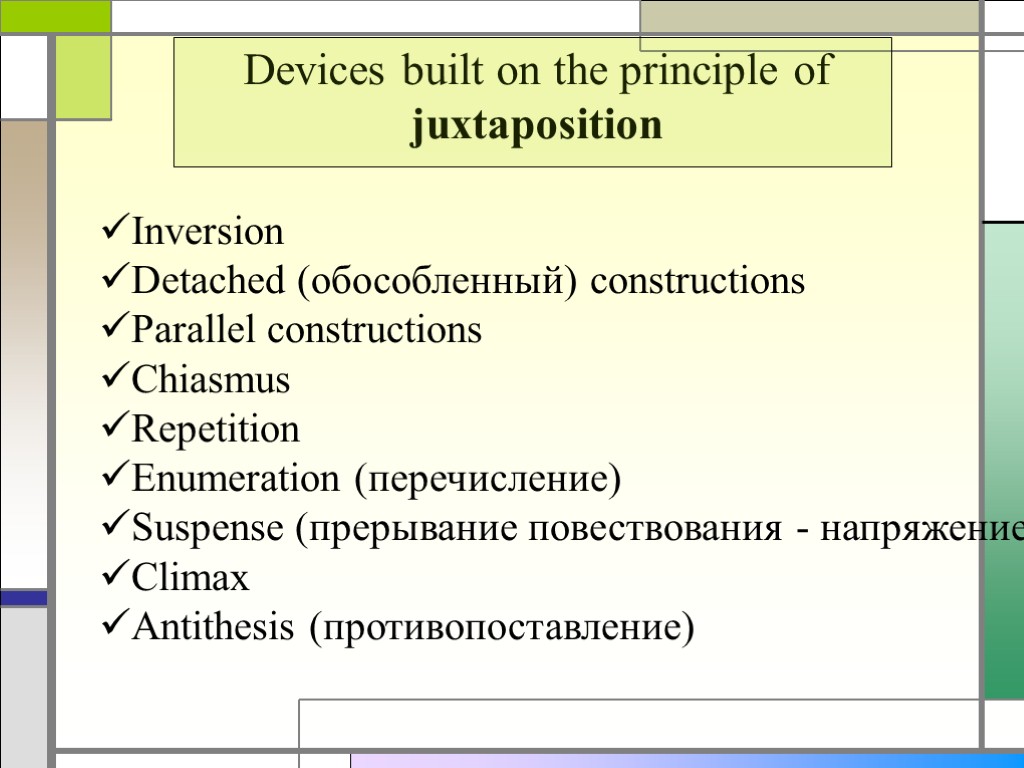
Devices built on the principle of juxtaposition Inversion Detached (обособленный) constructions Parallel constructions Chiasmus Repetition Enumeration (перечисление) Suspense (прерывание повествования - напряжение) Climax Antithesis (противопоставление)

practice In the days of old men made manners Manners now make men. (Byron) Chiasmus A tone of most extravagant comparison Miss Tox said it in. Inversion They looked at hundred of houses, they climbed thousands of stairs, they inspected innumerable kitchens. climax She was lovely: all of her – delightful. Detached (constructions Youth is lovely, age is lonely; Youth is fiery, age is frost. Antithesis

practice For glances beget (порождать) ogles (влюбленный взгляд), ogles sighs, sighs wishes, wishes words, and words a letter. (Byron) Repetition Know ye the land where the cypress (кипарис) and myrtle (мирт)… Know ye the land of the cedar and wine … ……………………………………………………………………… ‘Tis the clime of the East – ‘tis the land of the Sun. (Byron) Suspense The principle production of these towns … appear to be soldiers, sailors, Jews, chalk, shrimps, officers, and dock-yard men. Enumeration

Devices built on the type of connection Asyndeton Polysyndeton Gap-sentence link It was an afternoon to dream. And she took out Jon’s letters. Gap-sentence link The heaviest rain, and snow, and hail, and sleet, could boast of the advantage over him in only one respect. Polysyndeton ‘There’s no use in talking to him, he’s perfectly idiotic!’ said Alice. Asyndeton
![The peculiar use of colloquial constructions Ellipsis Aposiopesis [əepəusaiəpi:sis] (break-in-the-narrative) Questions in the narrative The peculiar use of colloquial constructions Ellipsis Aposiopesis [əepəusaiəpi:sis] (break-in-the-narrative) Questions in the narrative](https://present5.com/customparser/42497029_25584331 --- stylistic_theories_and_classifications.ppt/slide_24.jpg)
The peculiar use of colloquial constructions Ellipsis Aposiopesis [əepəusaiəpi:sis] (break-in-the-narrative) Questions in the narrative Represented speech (inner speech, uttered and unuttered)

practice Over and over he was asking himself: would she receive him? Represented speech Good intention but - ; You just come home or I’ll … break-in-the-narrative Nothing so difficult as a beginning Ellipsis Scrooge knew he was dead? Of course he did. How could it be otherwise? Questions in the narrative
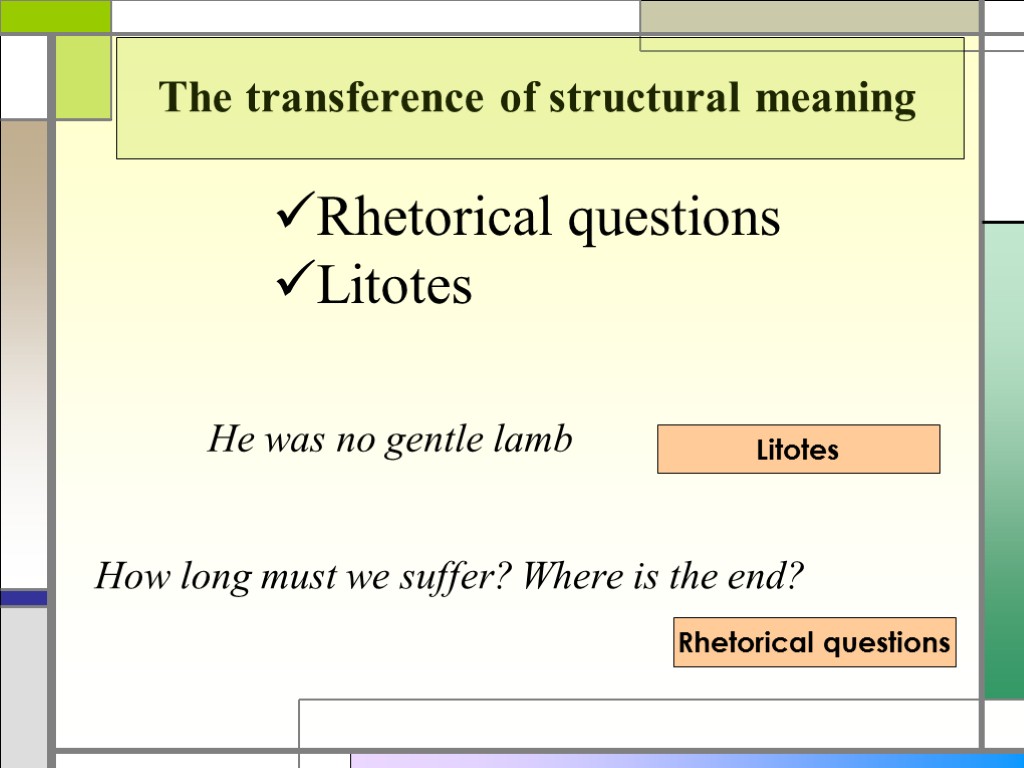
The transference of structural meaning Rhetorical questions Litotes He was no gentle lamb Litotes How long must we suffer? Where is the end? Rhetorical questions
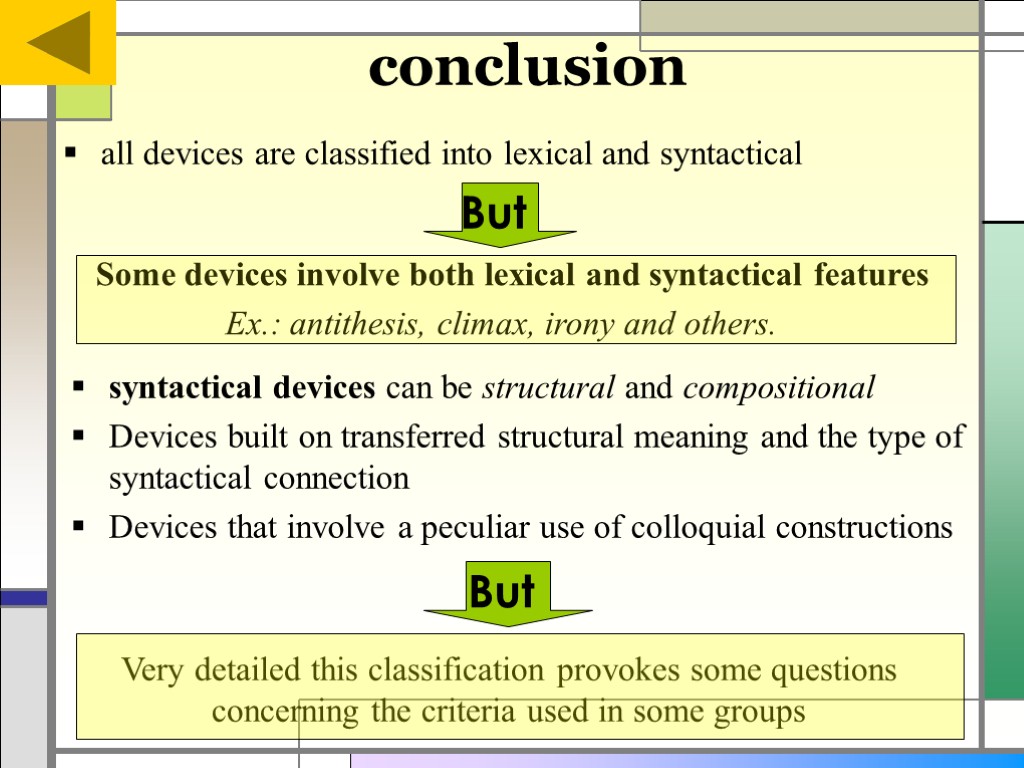
conclusion syntactical devices can be structural and compositional Devices built on transferred structural meaning and the type of syntactical connection Devices that involve a peculiar use of colloquial constructions But all devices are classified into lexical and syntactical But Some devices involve both lexical and syntactical features Ex.: antithesis, climax, irony and others. Very detailed this classification provokes some questions concerning the criteria used in some groups
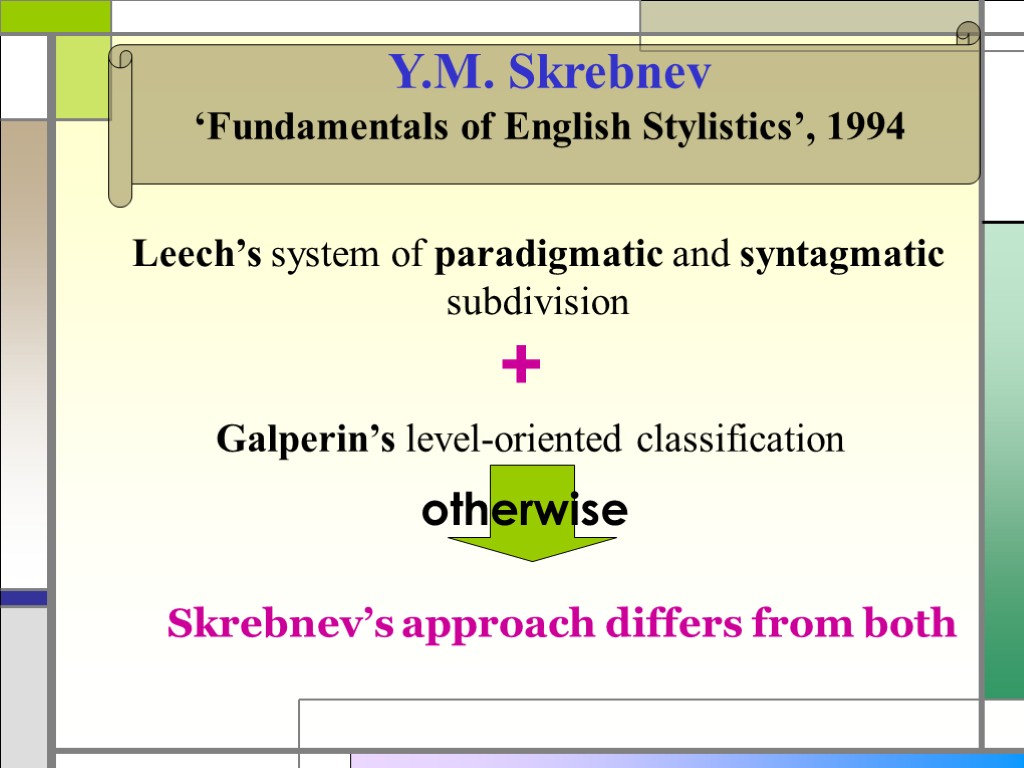
Y.M. Skrebnev ‘Fundamentals of English Stylistics’, 1994 Leech’s system of paradigmatic and syntagmatic subdivision + Galperin’s level-oriented classification otherwise Skrebnev’s approach differs from both
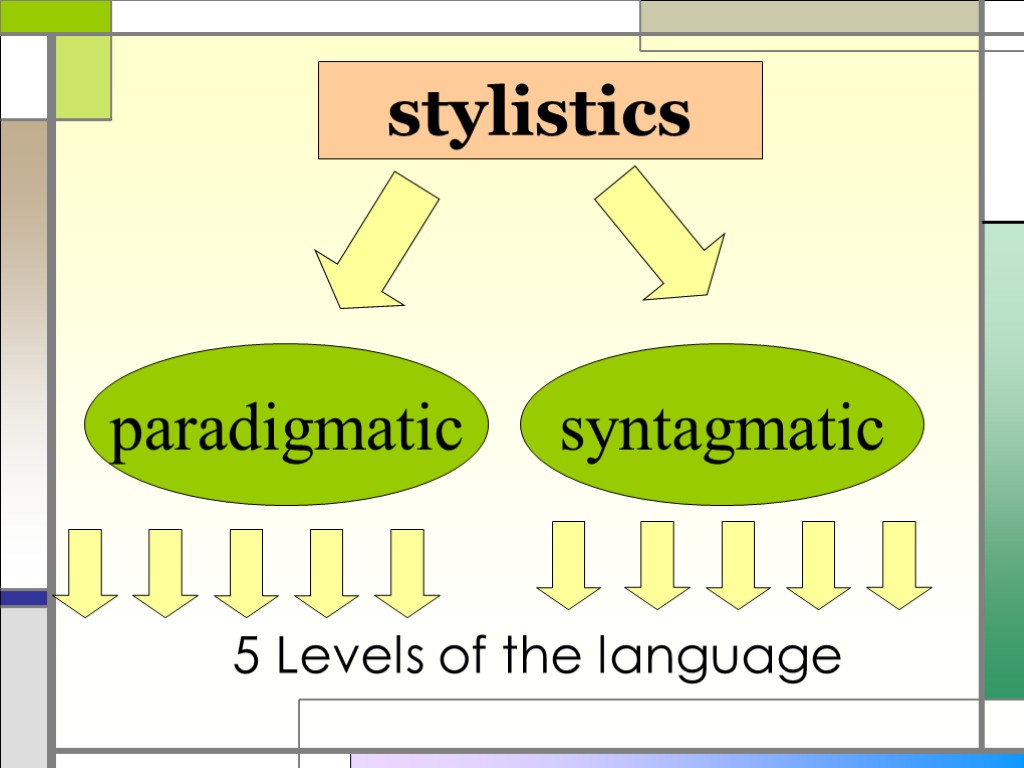
stylistics paradigmatic syntagmatic 5 Levels of the language
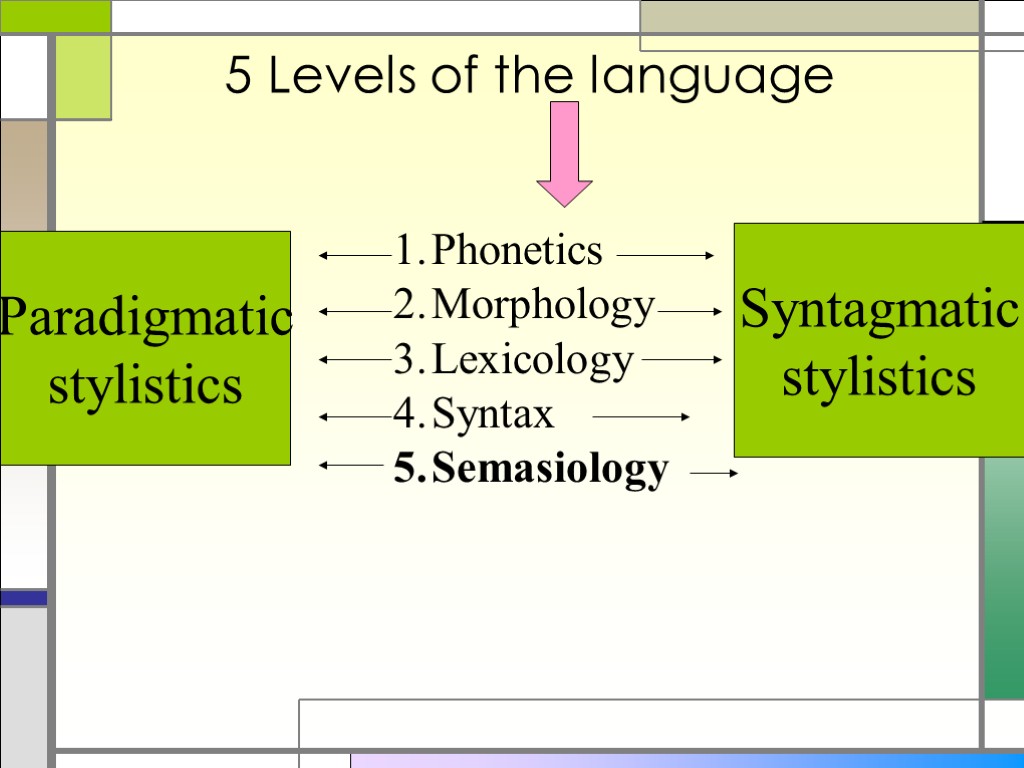
Syntagmatic stylistics Paradigmatic stylistics 5 Levels of the language Phonetics Morphology Lexicology Syntax Semasiology
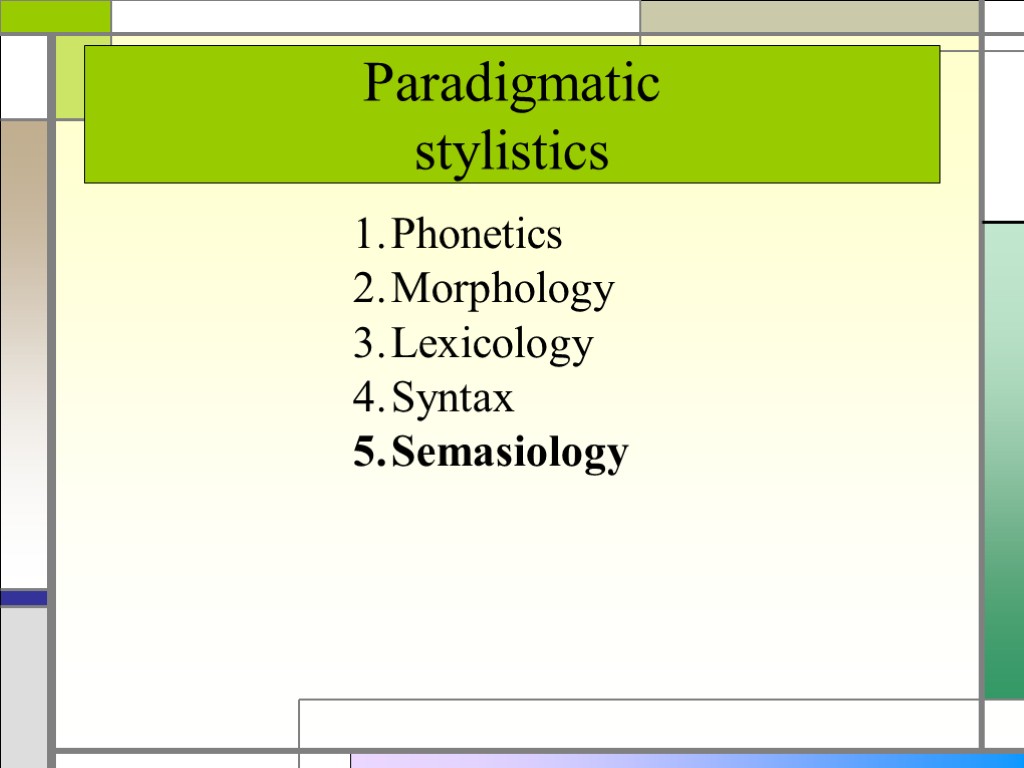
Paradigmatic stylistics Phonetics Morphology Lexicology Syntax Semasiology
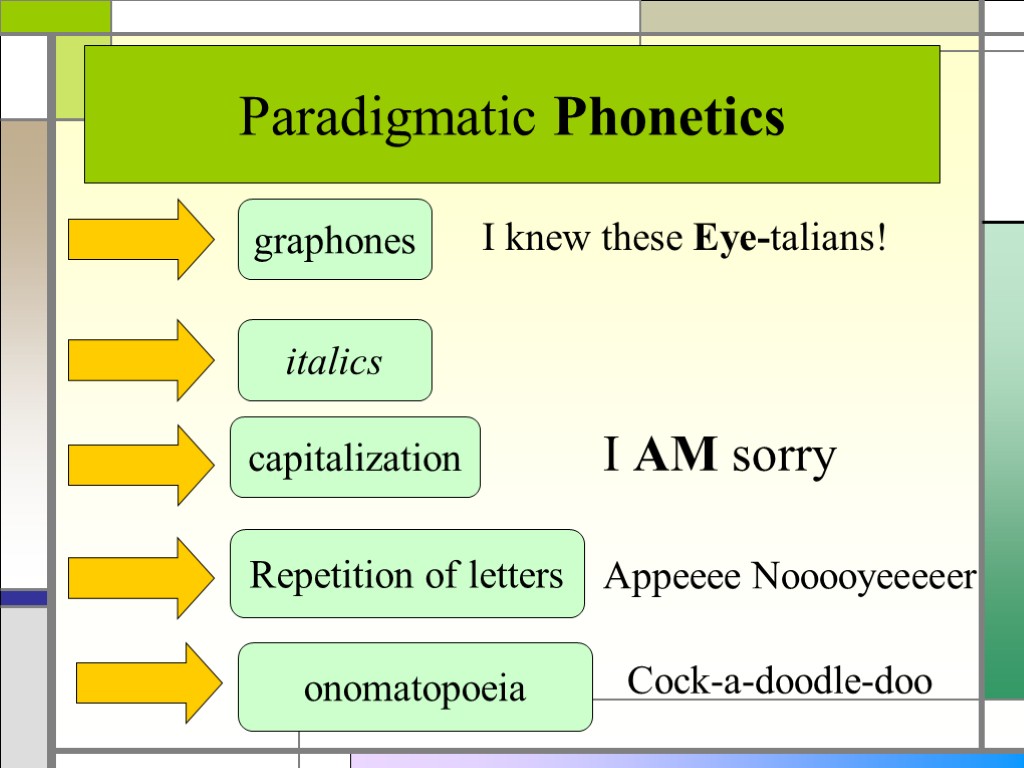
Paradigmatic Phonetics graphones italics capitalization Repetition of letters onomatopoeia I AM sorry Appeeee Nooooyeeeeer Cock-a-doodle-doo I knew these Eye-talians!
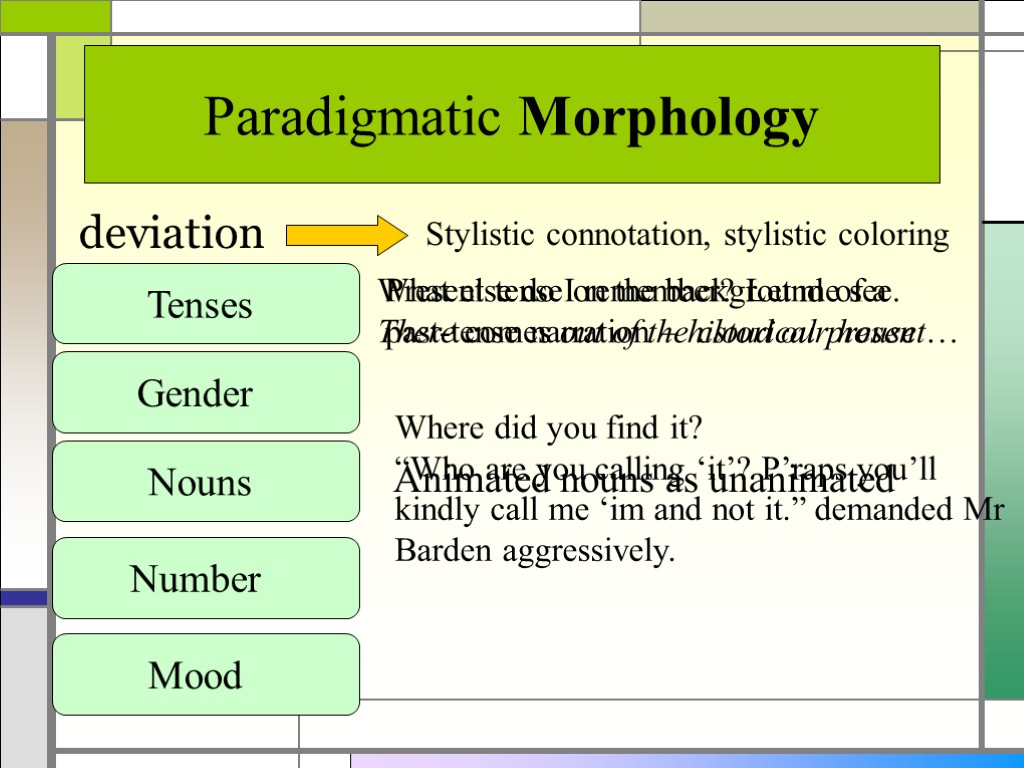
Paradigmatic Morphology deviation Stylistic connotation, stylistic coloring Tenses Gender Nouns Number Mood Present tense on the background of a past-tense narration – historical present What else do I remember? Let me see. There comes out of the cloud our house … Animated nouns as unanimated Where did you find it? “Who are you calling ‘it’? P’raps you’ll kindly call me ‘im and not it.” demanded Mr Barden aggressively.
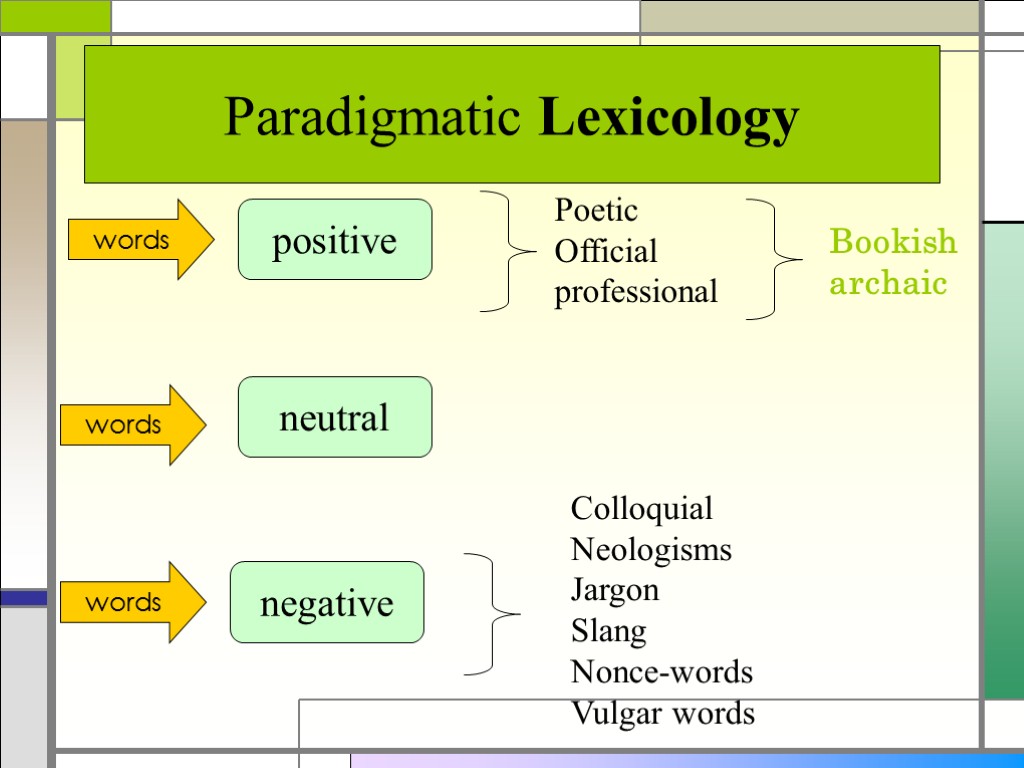
Paradigmatic Lexicology words positive words neutral words negative Poetic Official professional Bookish archaic Colloquial Neologisms Jargon Slang Nonce-words Vulgar words
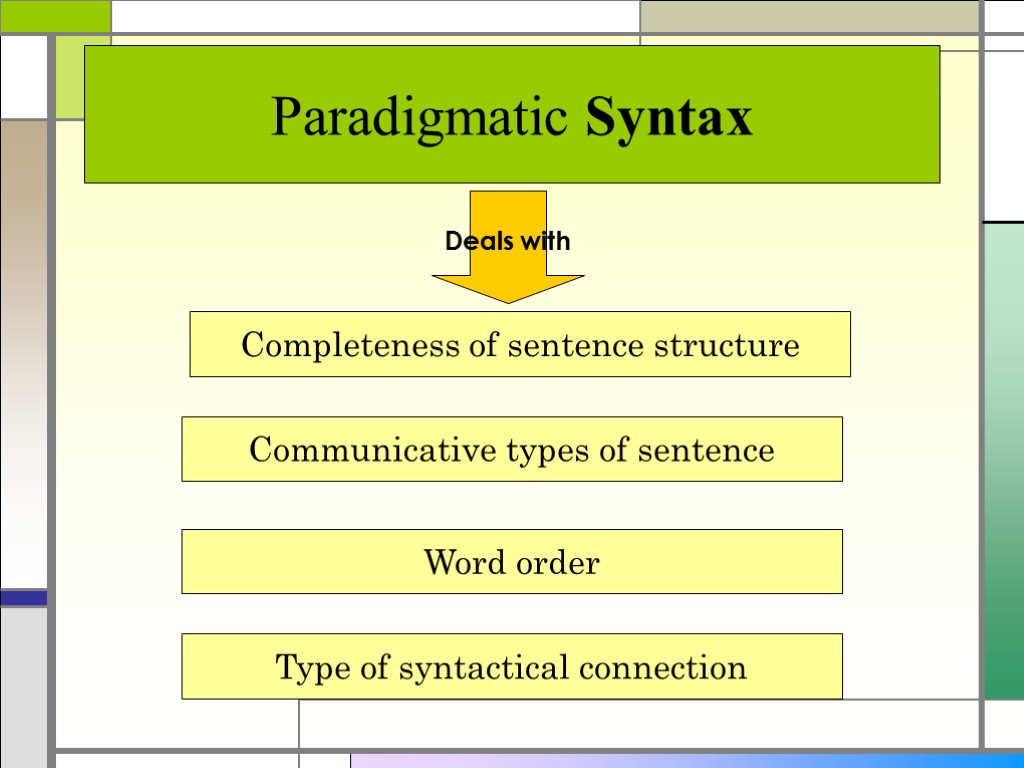
Paradigmatic Syntax Deals with Completeness of sentence structure Communicative types of sentence Word order Type of syntactical connection
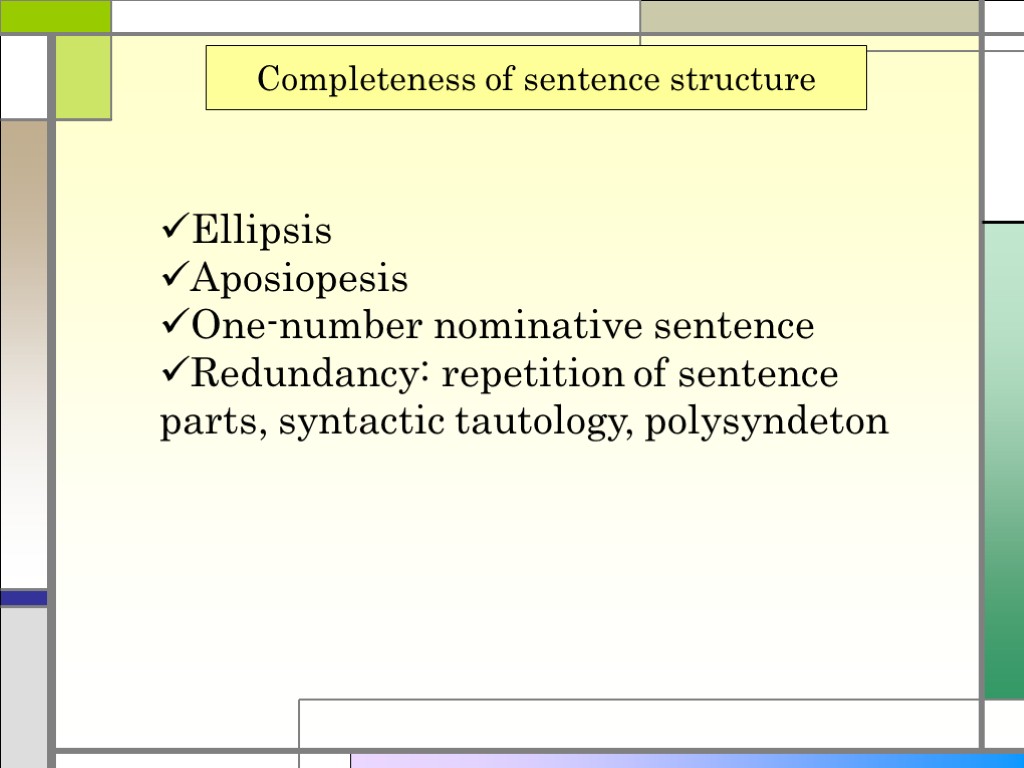
Completeness of sentence structure Ellipsis Aposiopesis One-number nominative sentence Redundancy: repetition of sentence parts, syntactic tautology, polysyndeton
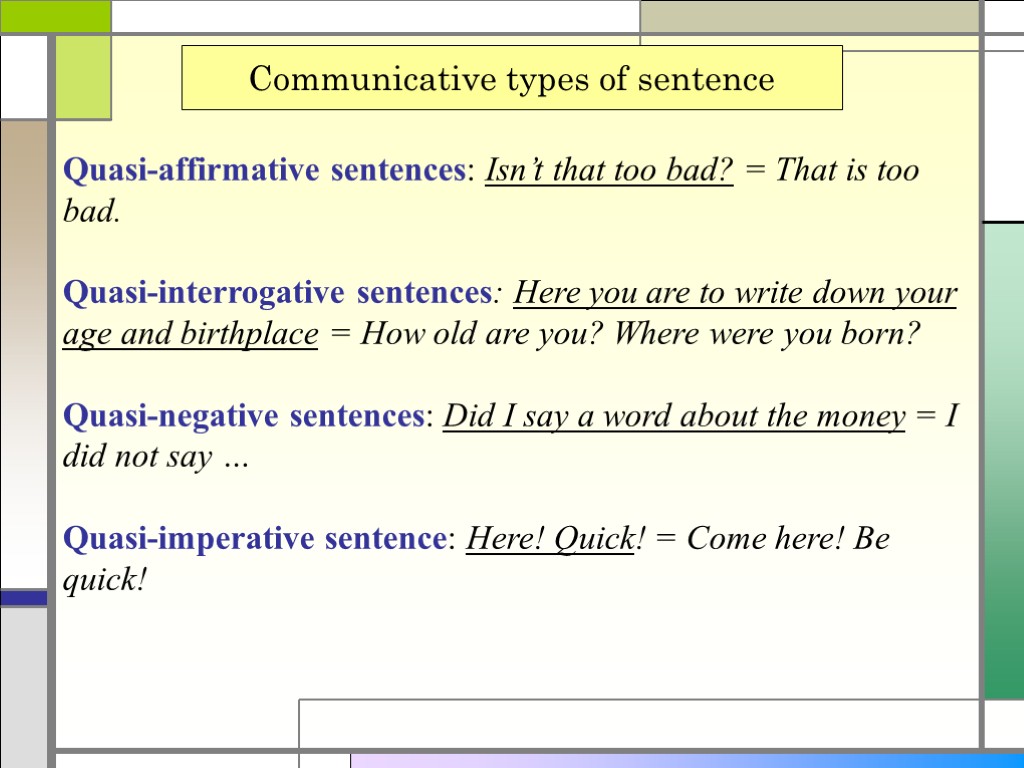
Communicative types of sentence Quasi-affirmative sentences: Isn’t that too bad? = That is too bad. Quasi-interrogative sentences: Here you are to write down your age and birthplace = How old are you? Where were you born? Quasi-negative sentences: Did I say a word about the money = I did not say … Quasi-imperative sentence: Here! Quick! = Come here! Be quick!
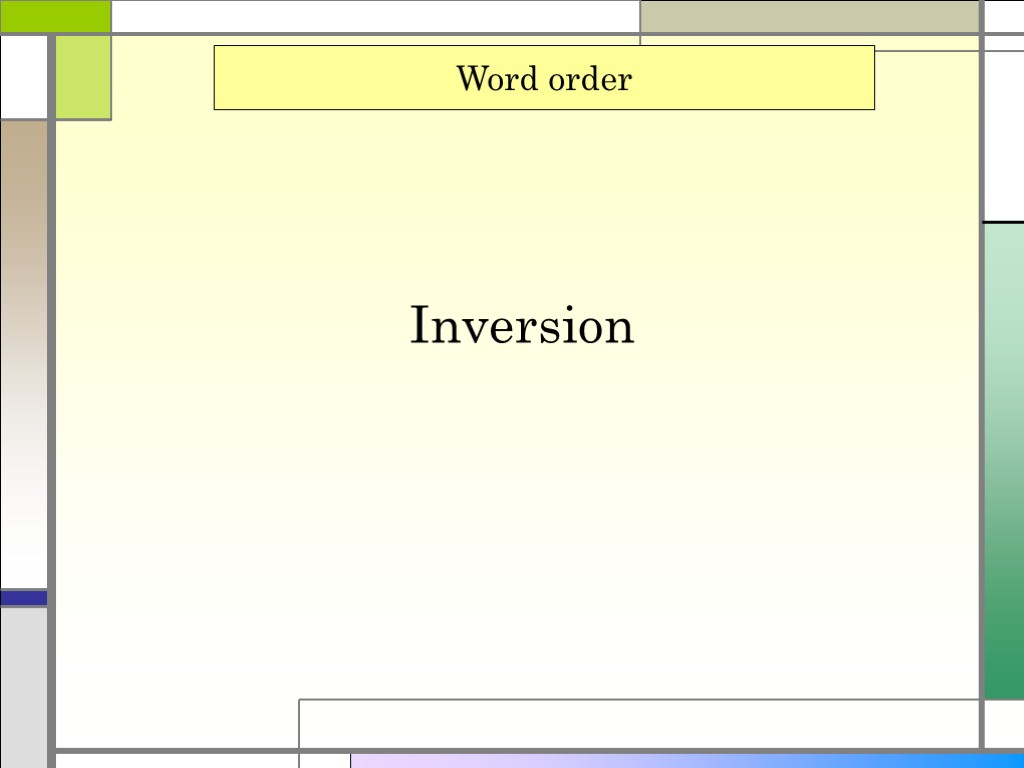
Word order Inversion
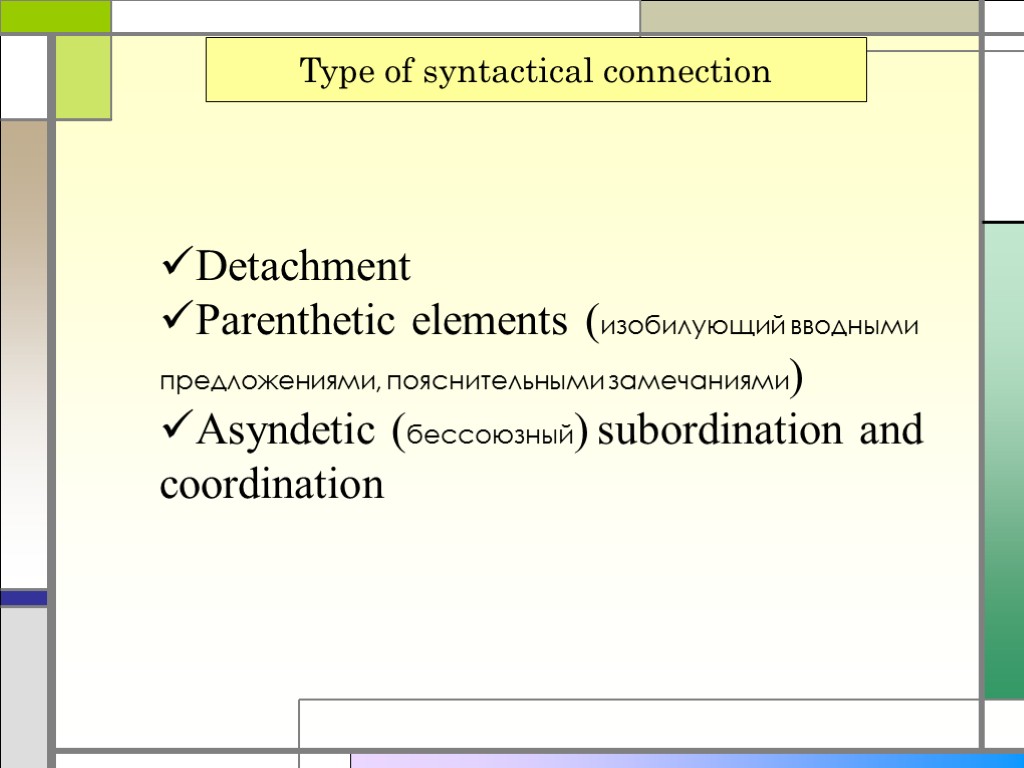
Type of syntactical connection Detachment Parenthetic elements (изобилующий вводными предложениями, пояснительными замечаниями) Asyndetic (бессоюзный) subordination and coordination
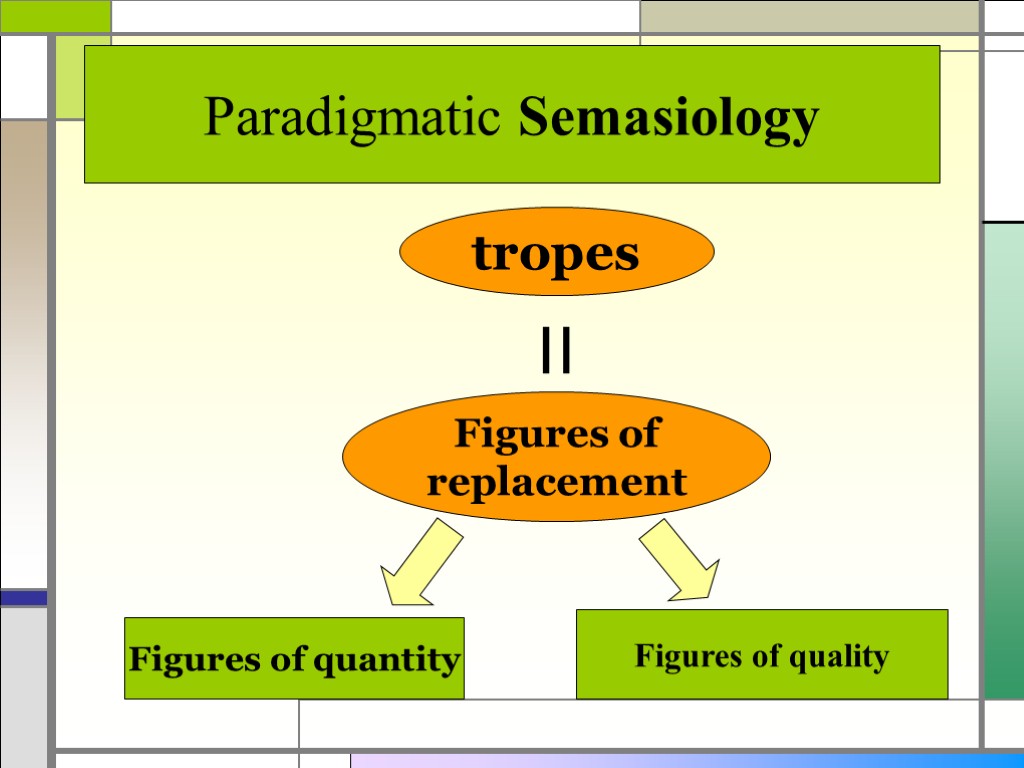
Paradigmatic Semasiology tropes = Figures of replacement Figures of quantity Figures of quality
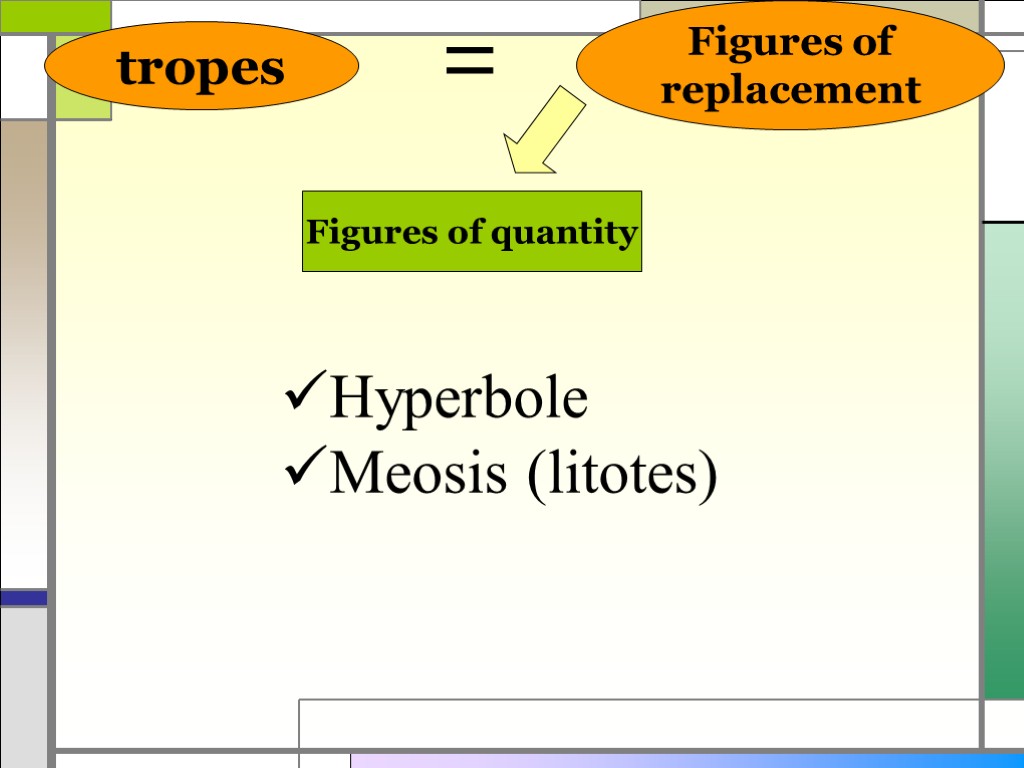
tropes Figures of replacement = Figures of quantity Hyperbole Meosis (litotes)
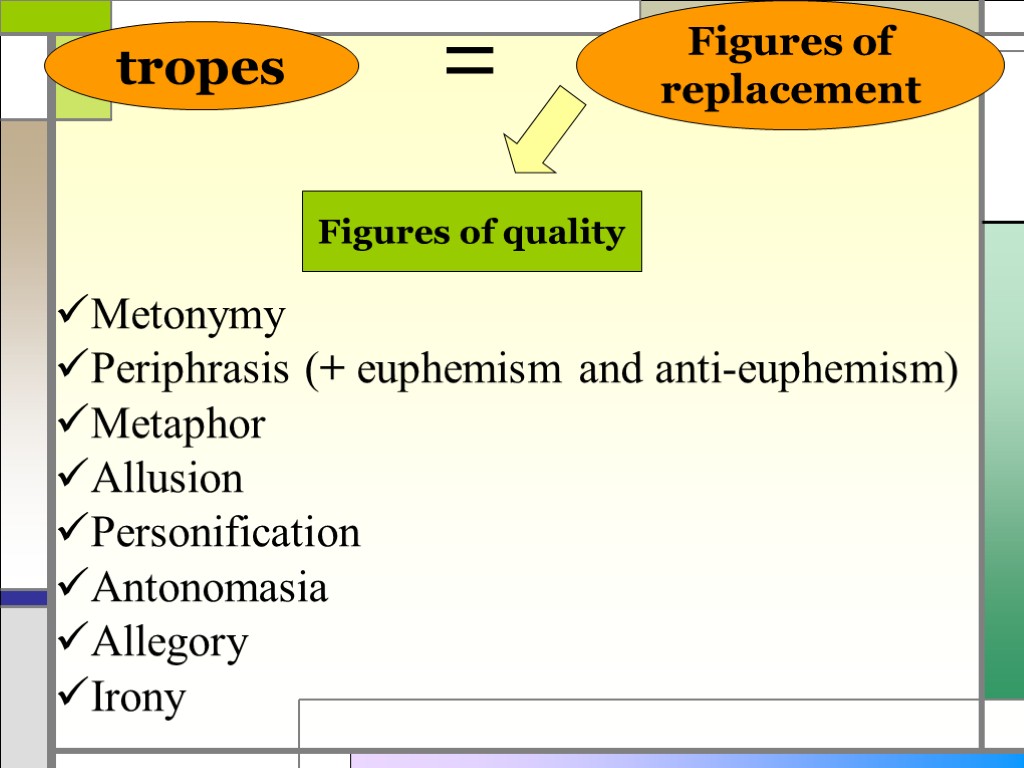
tropes Figures of replacement = Figures of quality Metonymy Periphrasis (+ euphemism and anti-euphemism) Metaphor Allusion Personification Antonomasia Allegory Irony
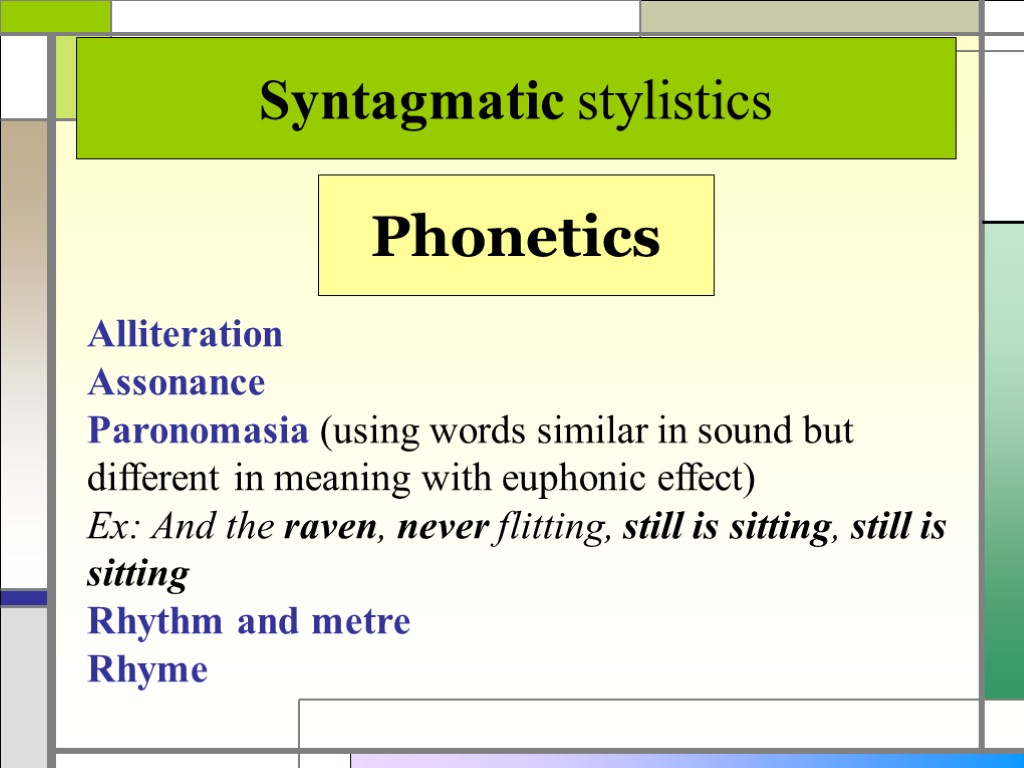
Syntagmatic stylistics Phonetics Alliteration Assonance Paronomasia (using words similar in sound but different in meaning with euphonic effect) Ex: And the raven, never flitting, still is sitting, still is sitting Rhythm and metre Rhyme
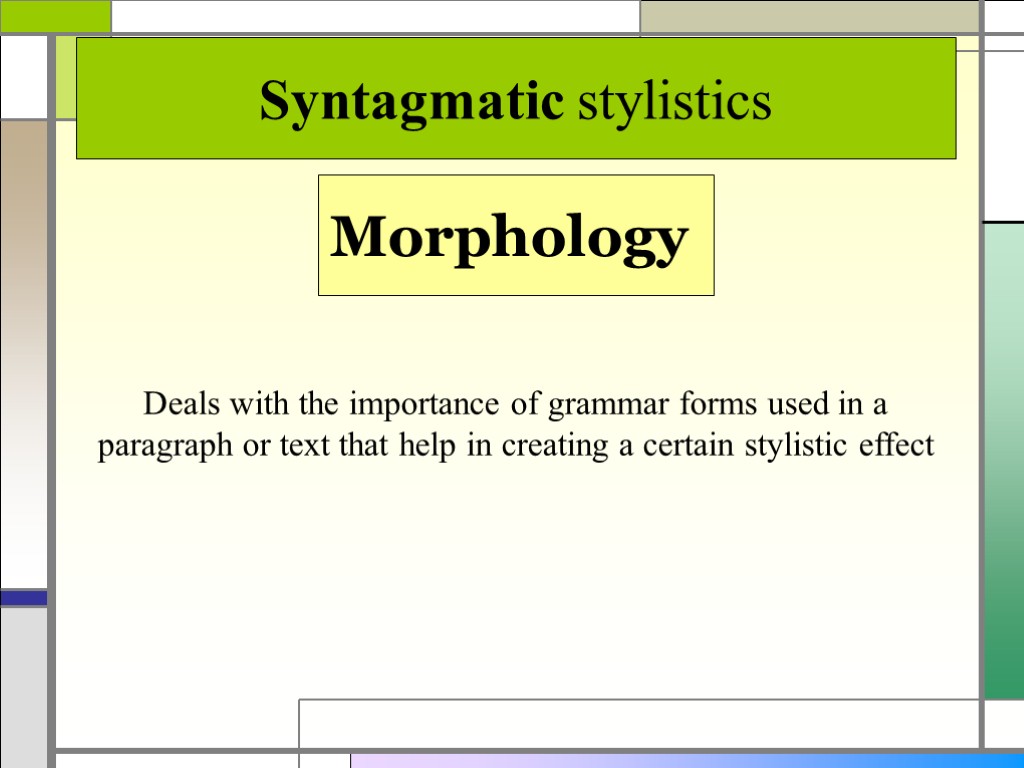
Syntagmatic stylistics Morphology Deals with the importance of grammar forms used in a paragraph or text that help in creating a certain stylistic effect
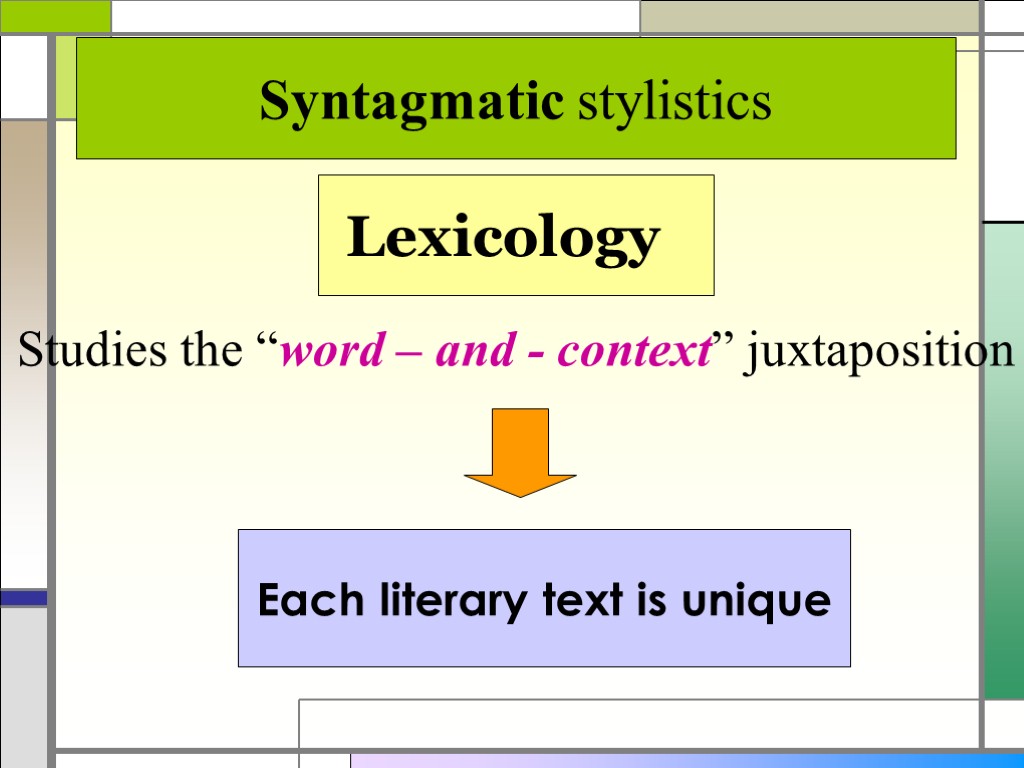
Syntagmatic stylistics Lexicology Studies the “word – and - context” juxtaposition Each literary text is unique
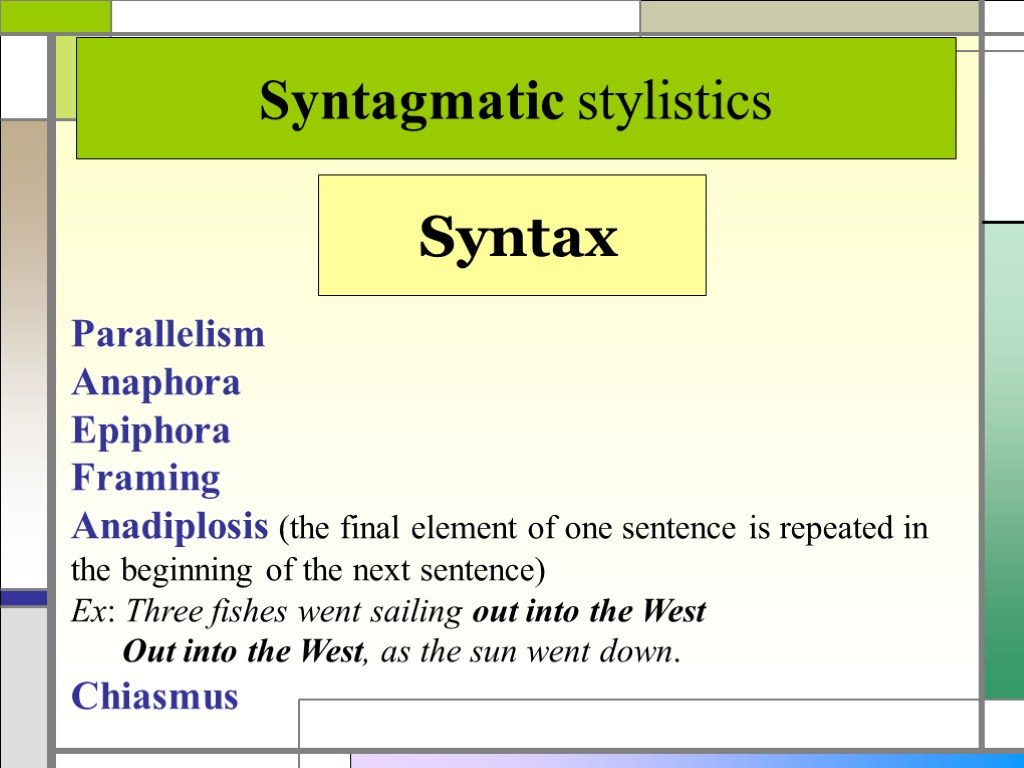
Syntagmatic stylistics Syntax Parallelism Anaphora Epiphora Framing Anadiplosis (the final element of one sentence is repeated in the beginning of the next sentence) Ex: Three fishes went sailing out into the West Out into the West, as the sun went down. Chiasmus
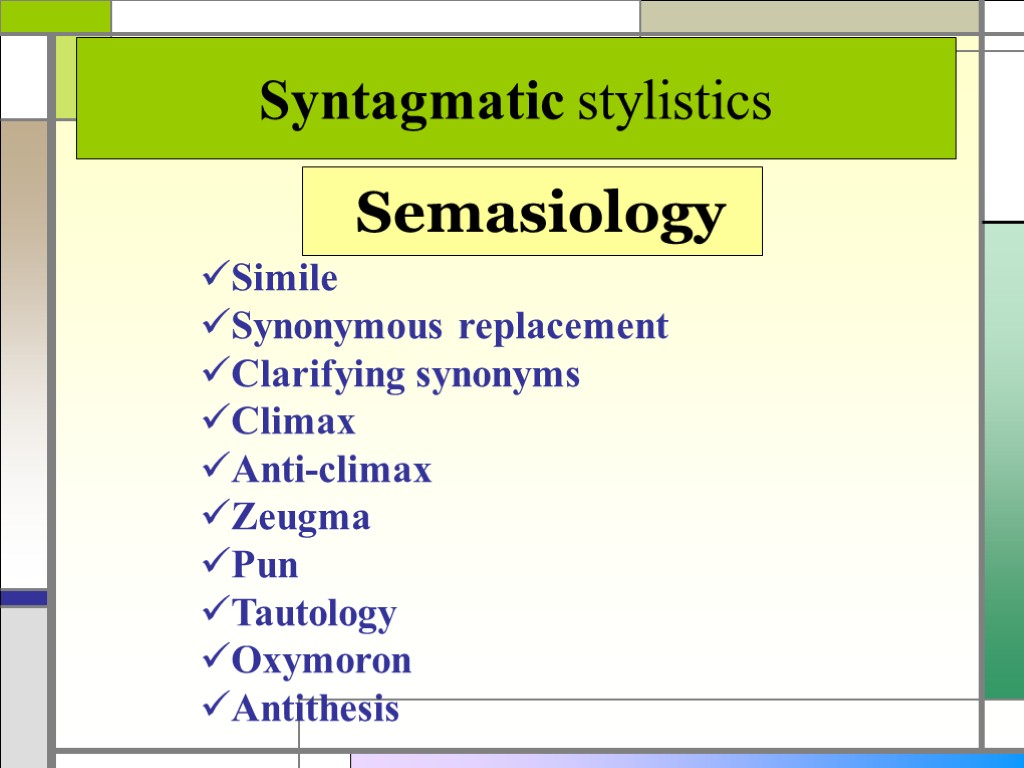
Syntagmatic stylistics Semasiology Simile Synonymous replacement Clarifying synonyms Climax Anti-climax Zeugma Pun Tautology Oxymoron Antithesis
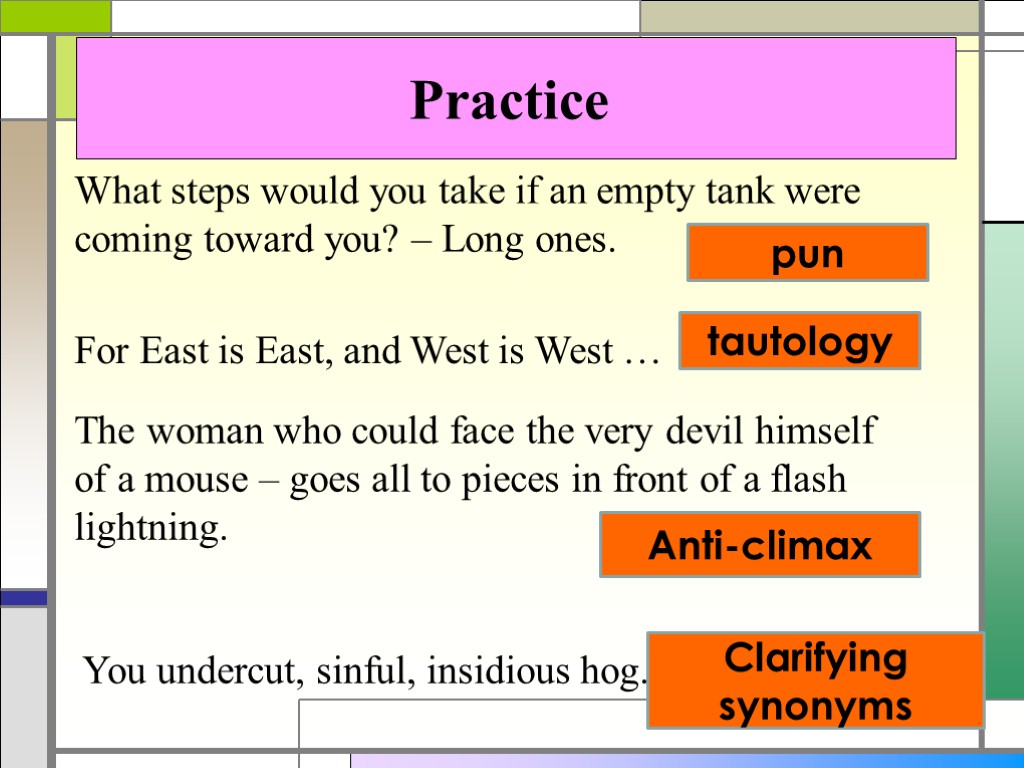
Practice What steps would you take if an empty tank were coming toward you? – Long ones. pun For East is East, and West is West … tautology The woman who could face the very devil himself of a mouse – goes all to pieces in front of a flash lightning. Anti-climax You undercut, sinful, insidious hog. Clarifying synonyms
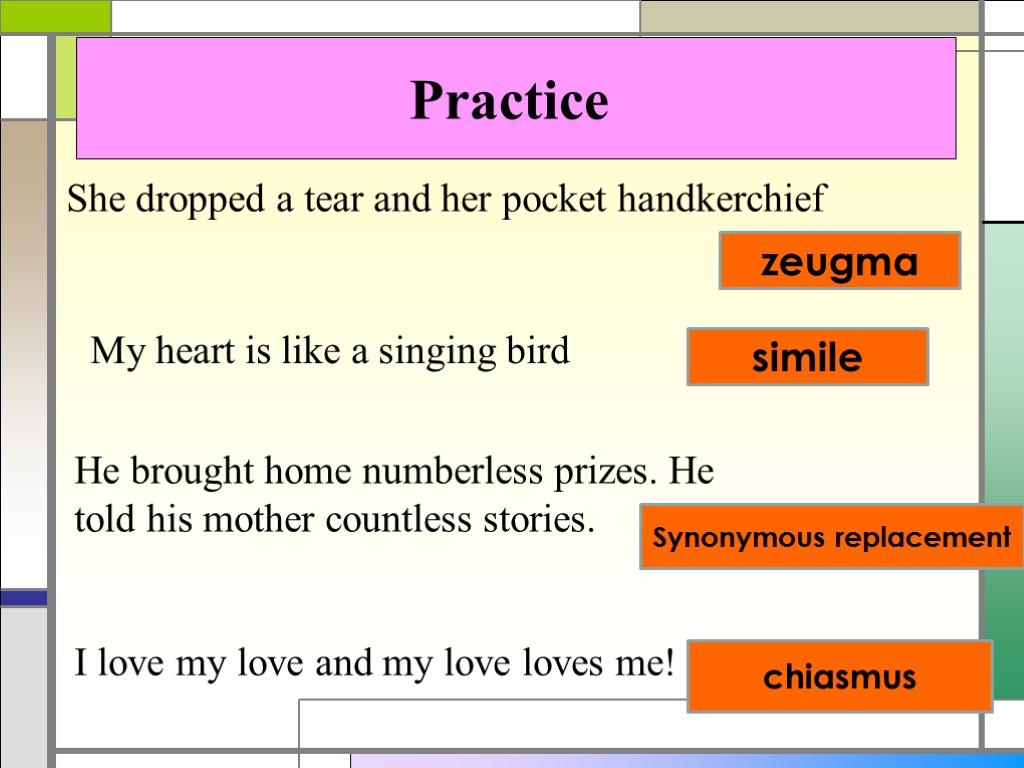
Practice She dropped a tear and her pocket handkerchief zeugma My heart is like a singing bird simile He brought home numberless prizes. He told his mother countless stories. Synonymous replacement I love my love and my love loves me! chiasmus
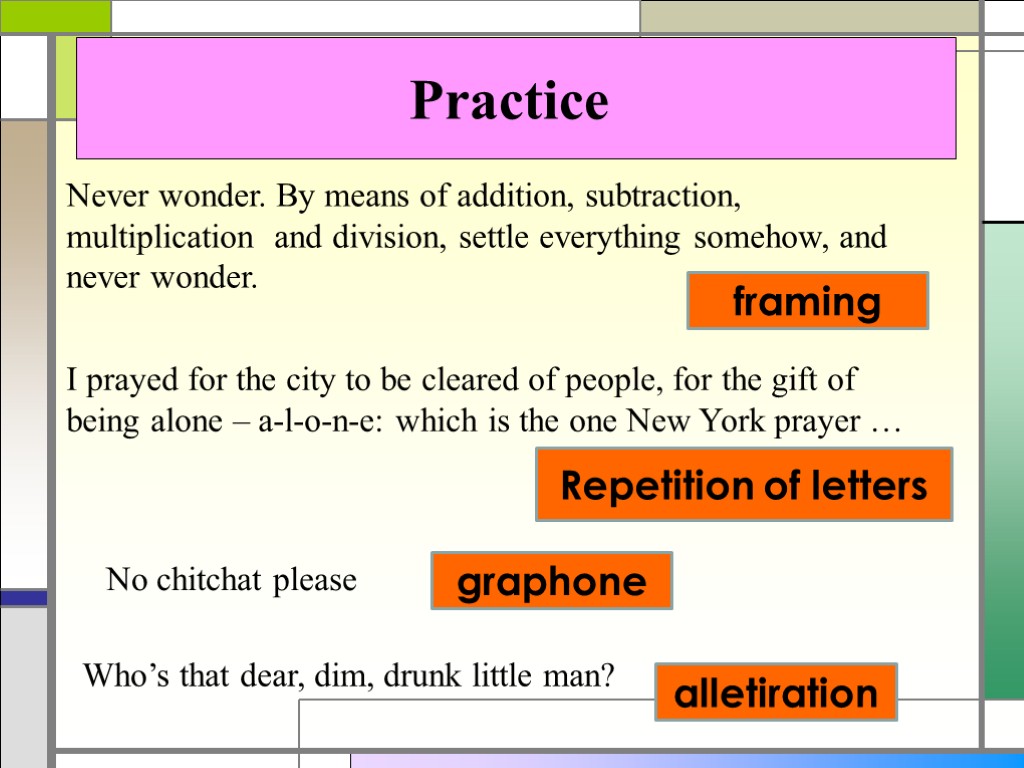
Practice Never wonder. By means of addition, subtraction, multiplication and division, settle everything somehow, and never wonder. framing I prayed for the city to be cleared of people, for the gift of being alone – a-l-o-n-e: which is the one New York prayer … Repetition of letters No chitchat please graphone Who’s that dear, dim, drunk little man? alletiration
stylistic_theories_and_classifications.ppt
- Количество слайдов: 50

